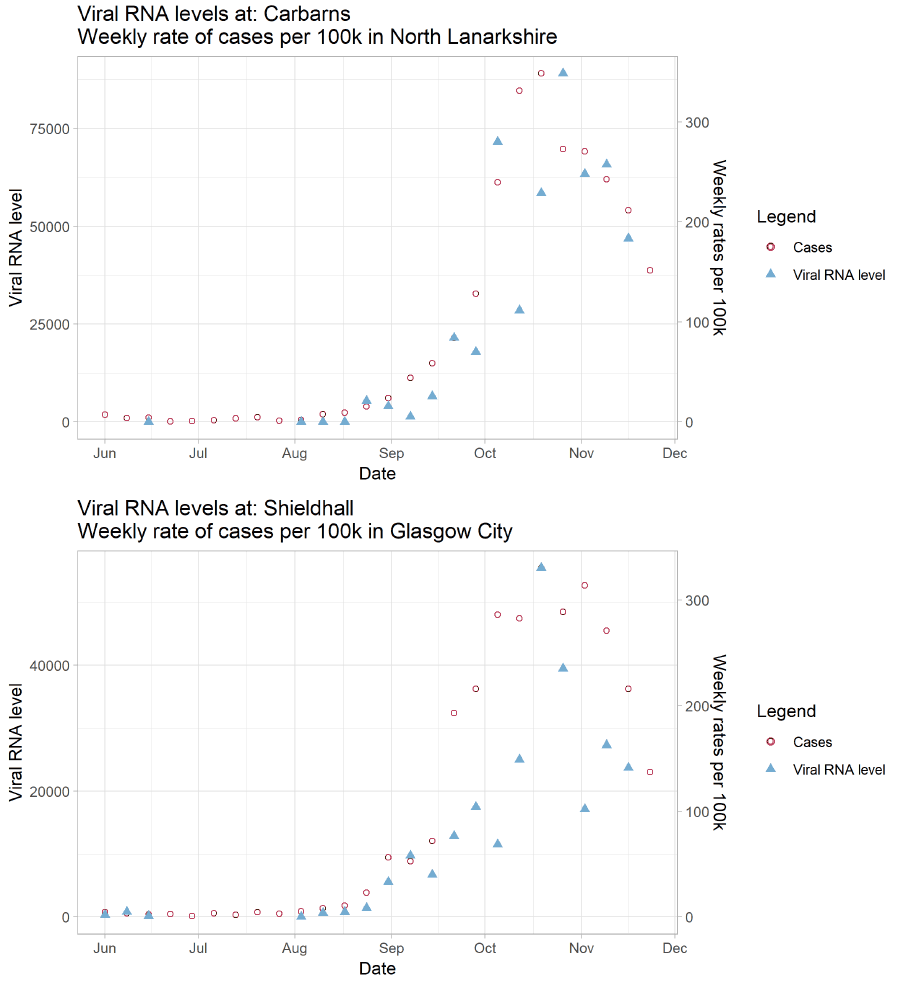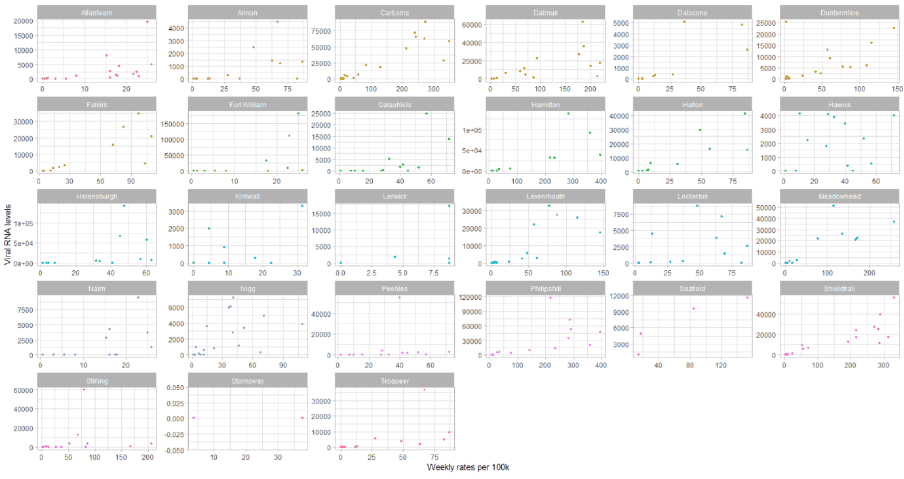Coronavirus (COVID-19): modelling the epidemic (issue no. 29)
Latest findings in modelling the COVID-19 epidemic in Scotland, both in terms of the spread of the disease through the population (epidemiological modelling) and of the demands it will place on the system, for example in terms of health care requirement.
This document is part of a collection
What can analysis of wastewater samples tell us about local outbreaks of Covid-19 infection?
Samples from Waste Water Treatment Works (WWTW) in Scotland have been analysed by the Scottish Environment Protection Agency (SEPA) to detect fragments of SARS-Cov-2 virus RNA in waste water. This is reported from lab analysis as gene copies per litre. The reported levels of SARS-Cov-2 found have been compared to trends in confirmed Covid-19 cases in the surrounding areas.
Figure 14 shows that the level of gene copies recorded at Carbarns WWTW and Shieldhall WWTW increased as the number of positive cases increased in North Lanarkshire and Glasgow City, respectively, from September to October. The concentration levels then came down as the number of confirmed cases in these locations reduced over the past month.
Analysis of Covid-19 viral concentrations in comparison to recorded positive tests shows similar trends to that in Figure 14 for a number of other outbreaks around Scotland. A comparison of viral RNA levels at each site and confirmed positive tests in the surrounding area is shown in Figure 15. While this approach may not provide an early indication of a developing outbreak, it gives us confidence that the outbreak has indeed been contained and we are not missing a substantial number of asymptomatic viral spreaders.


Contact
There is a problem
Thanks for your feedback